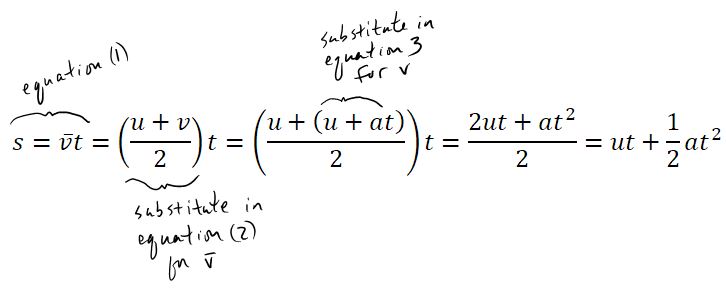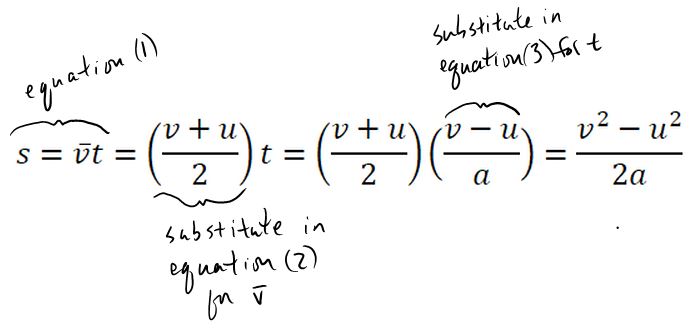Acceleration
Acceleration is the rate of change of velocity. It is a vector. Mathematically, we define acceleration as:

The official SI unit for acceleration is m/s2, which is a meter/second per second. You may also encounter km/hr/s or other combinations of speed per unit time.
In this course, we will deal only with uniform (or constant) acceleration.
It is important to realize that acceleration is not motion. Acceleration represents a change in the state of motion. Explore and expand your understanding of acceleration by answering the following questions:
B) Describe a situation where an object has a positive velocity and a negative acceleration.
C) Describe a situation where an object has a negative velocity and a positive acceleration.
D) Describe a situation where an object has a negative velocity and a negative acceleration.
E) Describe a situation where an object has a constant speed and a non-zero acceleration.
To start moving, an object needs an accleration -- so an object at rest that starts to move.
A car moving to the right but slowing down.
An object moving to the left and slowing down.
An object moving to the left and speeding up.
An object moving with a consant speed but changing direction. Recall that a velocity has speed and direction, so a change in direction will cause a change in velocity, ie acceleration.
Graphing Accelerated Motion
Explore the applet below to see the difference between constant velocity and constant acceleration.
Position vs. Time Graphs
Accelerated motion can be represented on a position vs. time graph. Examine the list below to find how to extract information from a position vs. time graph:
- slope = velocity, the steeper the slope, the greater the velocity
- a positive slope represents a velocity in the positive direction
- a negative slope represents a velocity in the negative direction
- a curve opening upwards shows that there is a positive acceleration
- a curve opening downwards shows that there is a negative acceleration
- a horizontal slope represents a velocity of zero - the object is a rest
- a vertical slope is not possible (it always takes time to change position)
Play with the applet below by picking a graph, then adjusting the sliders so the motion of the red ball matches the green line.
Velocity vs. Time Graphs
Accelerated motion can be represented on a velocity vs. time graph. Examine the list below to find how to extract information from a velocity vs. time graph:
- slope = acceleration (rate of change of velocity), the steeper the slope, the greater the acceleration
- a positive slope represents a change in velocity in the positive direction
- a negative slope represents a change in velocity in the negative direction
- a horizontal slope represents a constanta velocity
- the area between the line and the time axis represents the displacement of the moving object
The Motion Formulas
There are 5 formulas known collectively as the motion formulas - or more specifically as the equations that describe uniformly accelerated linear motion. While these equations will be provided for you on a formula sheet during any tests, your life will be a lot easier if you memorize them. These five equations are:
(1)

(2)
(3)
(4)
(5)
The symbols used in these equations are defined as follows:
= average velocity
u = initial velocity
v = final velocity
s = displacement
t = time
a = acceleration
Definition of average speed
Equations (1) and (2) were introduced in the previous page of notes. They are the equations for average speed. In this section we apply them only if there is a uniform acceleration.
(1)  (2)
(2) 
Definition of acceleration
As defined at the top of the page, acceleration is the rate of change of velocity, expressed mathematically as

Rewriting this equation to solve for v2 yields equation (3).
(3) ![]()
Position equation for accelerated motion
Equation (4) is a combination of the first three equations. See the derivation below.

(4) 
Final velocity equation for accelerated motion
Equation (5) is again a combination of the first three equations. See the derivation below.

(5) ![]()